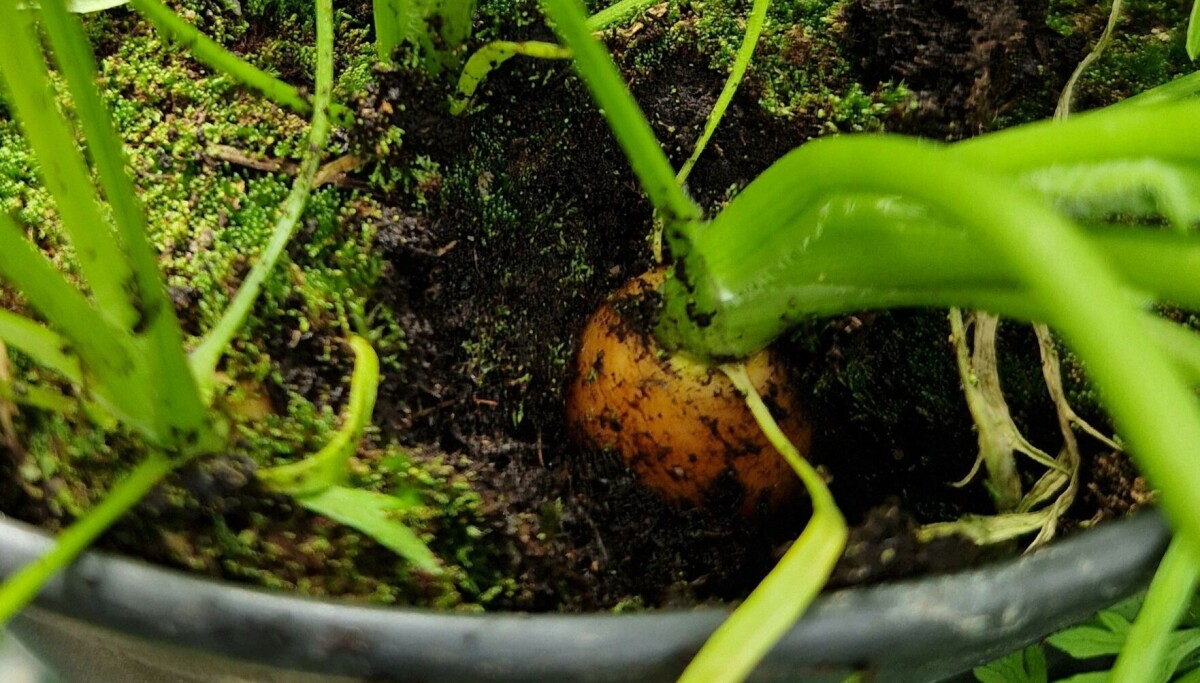Many have balconies or terraces, often filled with flowers during summer.
But what about vegetables?
Trond Knapp Haraldsen grows vegetables in pots and containers.
“The amount of space you have decides what you can grow. You can grow all sorts of things on the balcony, as long as you have room for the pots,” he says.
He usually starts early in spring, but reassures those who haven’t started yet:
“It’s not too late to start now. I was at a garden centre the other day, and they had loads of vegetables for sale. These plants are already partly grown, which makes it a great way to get started,” says Haraldsen.
Sheltered spots for tomatoes
Haraldsen grows tall tomato plants in large pots. These days, he uses a greenhouse, but they used to sit on his terrace or in sunny corners.
“Tomatoes need to be in a sheltered spot,” he says.
He pinches off a side shoot. His goal is to encourage the plant to grow straight up.

“If there are too many offshoots, the plant becomes messy and wastes a lot of nutrients on them,” he says.
Carrots everywhere
Pots and tubs filled with carrots are everywhere at Haraldsen’s place.
He begins sowing seeds early in the season and continues planting in intervals throughout the spring. This way, the carrots don’t all ripen at the same time.
In a three-litre pot, he gets 10 to 12 carrots. He removes the smallest ones to give the others room to grow.
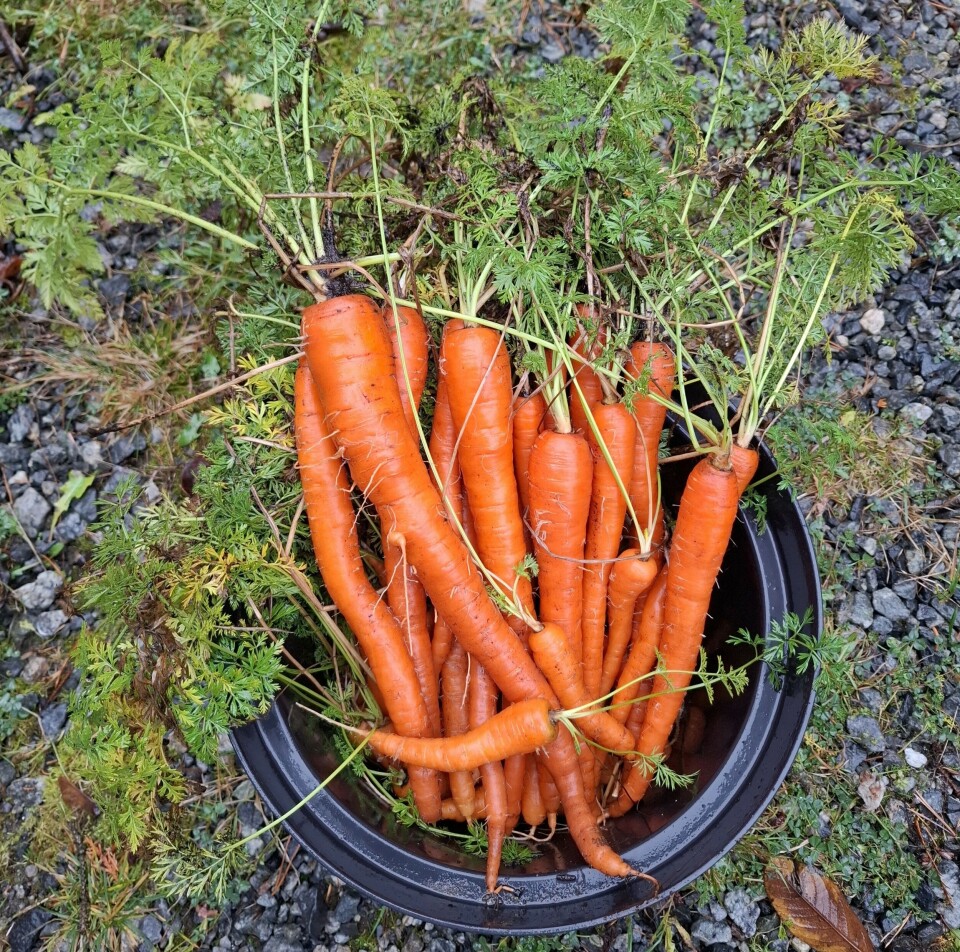
” You can also grow carrots in 1.75-litre milk cartons and large juice cartons,” he says.
Most varieties thrive together
Sometimes seeds don’t sprout well.
That happened in a tub of carrots. So Haraldsen planted onions in between.
“Most vegetable varieties grow well together. The important thing is to choose types that don’t shade each other,” he says.
He has chosen sweet carrot varieties.
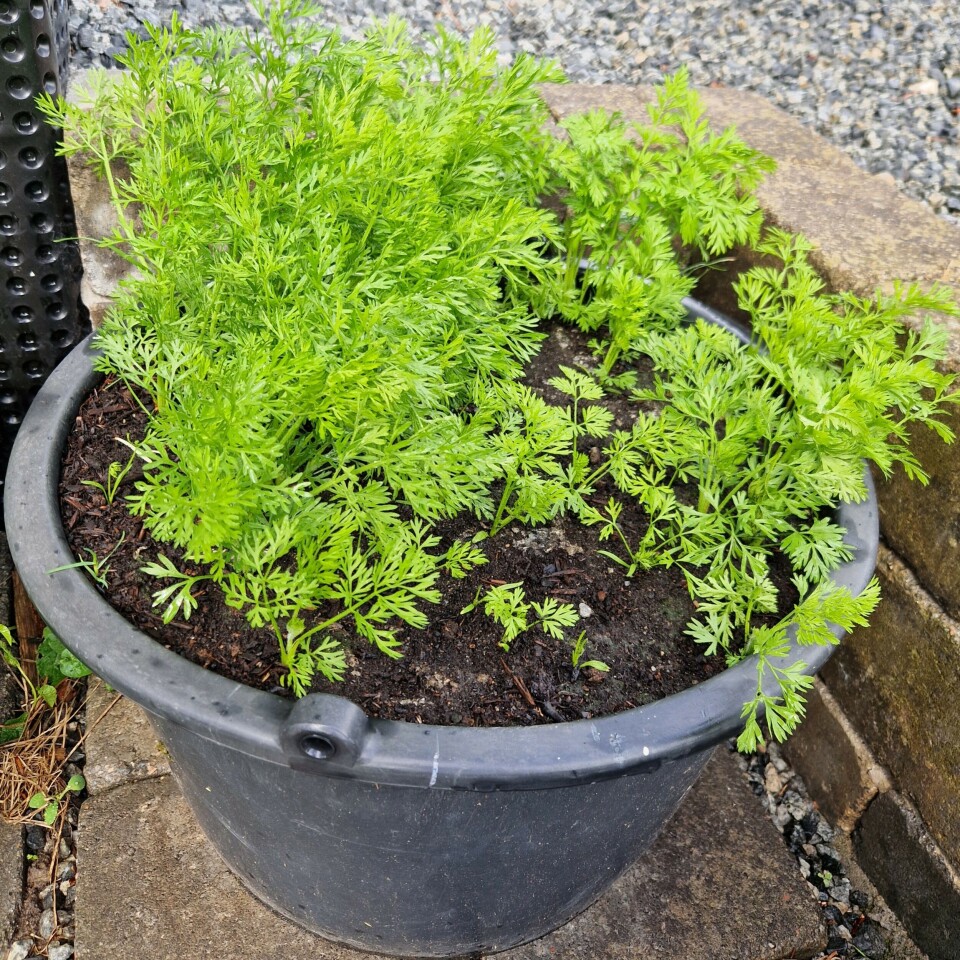
“There’s a difference in taste. Check the seed packet,” says Haraldsen.
He often brings one or more carrot pots with him on vacation.
“Then I have fresh carrots at the cabin,” he says.
Squash is eager
“Squash works like a charm. You can easily grow it in a pot, and it looks great as it spreads out,” says Haraldsen, who also recommends its relative, pumpkin, as a potted plant.
The principle is: The bigger the plant, the more water and nutrients it needs – and the larger the pot.
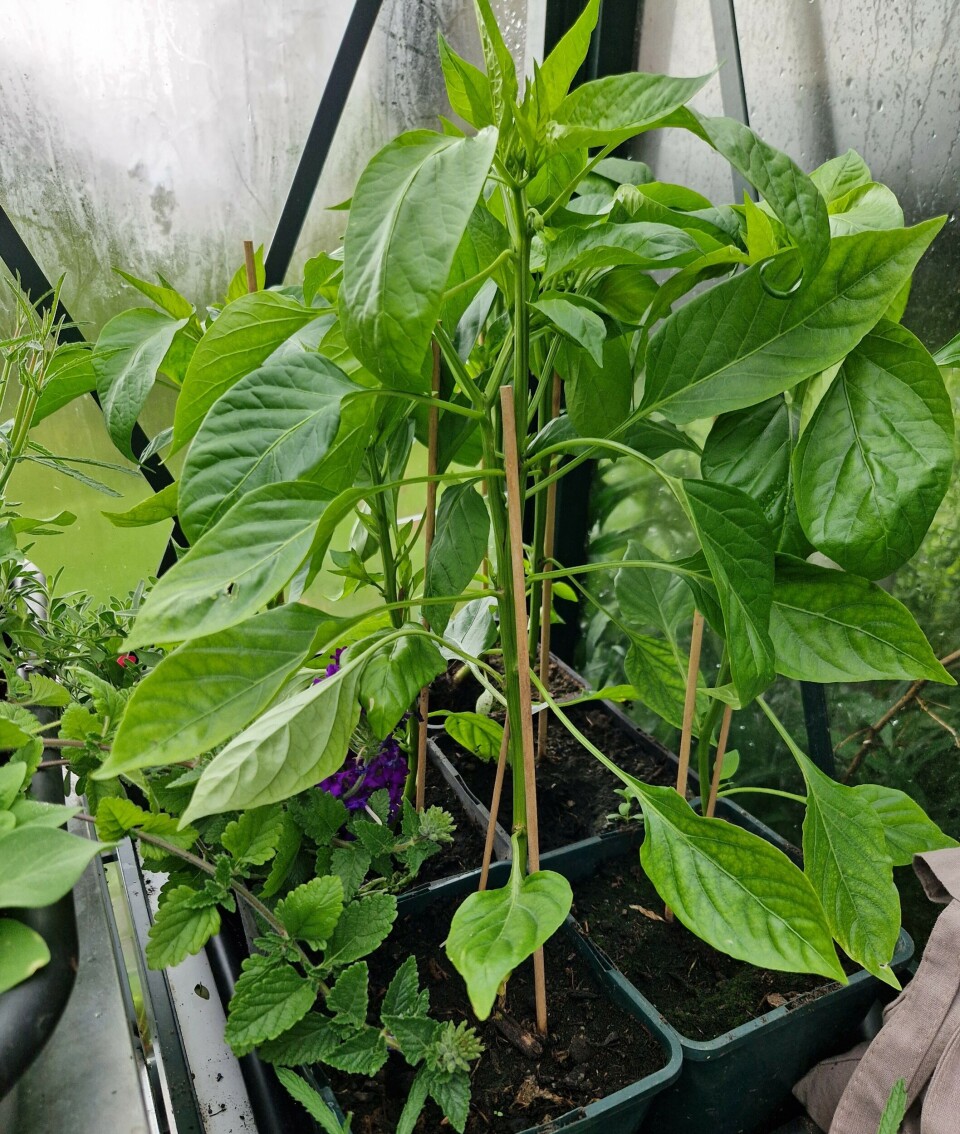
He reuses the soil in the pots. Three years is no problem, but Haraldsen has also used the same soil for five years.
Strawberries are the easiest of all
Strawberries might be the easiest of them all.
“Strawberries are perfect for the balcony. They pretty much take care of themselves,” says Haraldsen.
He shows off strawberry plants that have survived the winter and are now bursting with flowers.
“So if you want to something easy, strawberries are the way to go,” he recommends.
One potato yields a kilo
On Haraldsen’s terrace stands a large, lush plant. It started as a small potato but will give him a kilo of potatoes by Midsummer.
The senior researcher at NIBIO starts with seed potatoes from the garden centre.
“I don’t recommend using store-bought potatoes, because they may carry diseases,” he says.
But seed potatoes can be reused for years.
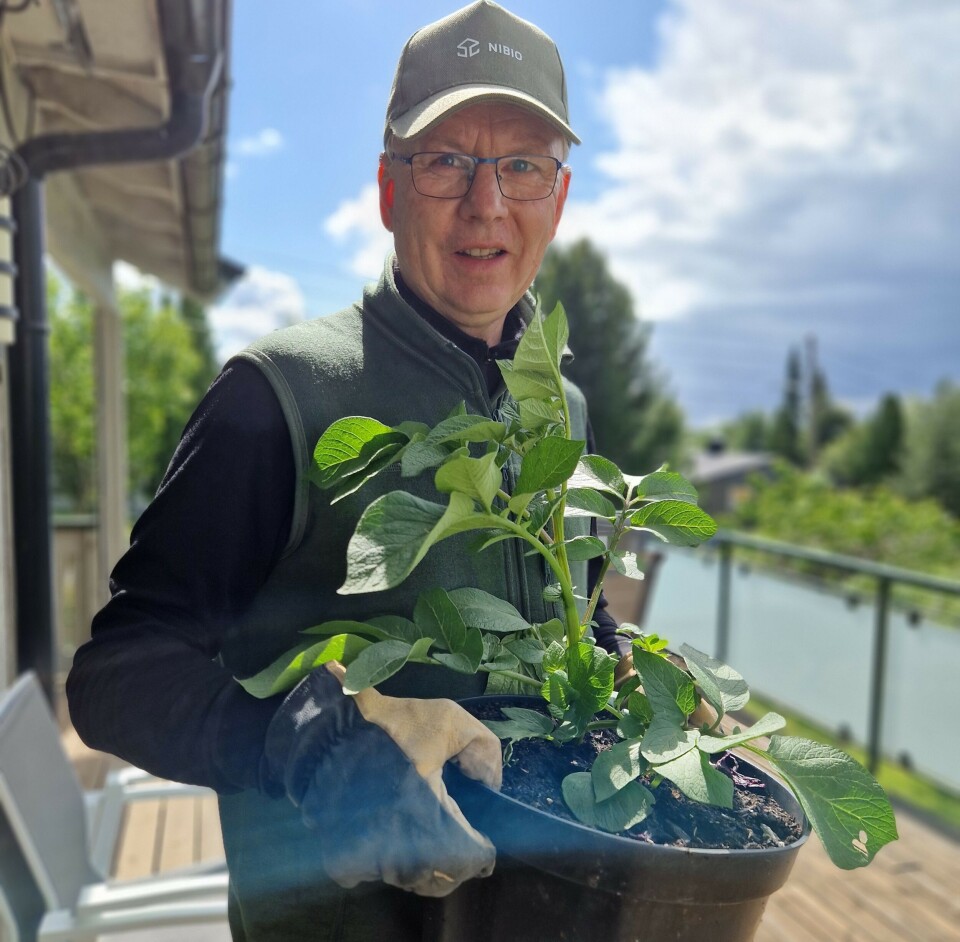
Haraldsen takes the smallest potatoes from the harvest and stores them in the fridge over winter.
In March, he places them in a window.
“Then they sprout in the light. It’s like the white shoots potatoes get when left for a while. But when they get light, they turn green and grow better,” he says.
Haraldsen fills a pot halfway with soil, adds a handful of dry chicken manure from the garden centre, places the potato in, and fills the pot with more soil.
The pot remains like that until the harvest is ready.
“It’s a good idea to rotate it occasionally, since the potato plant reaches towards the sun,” he says.
Big plants need a lot of water
You need to water generously. Potatoes and other plants need more and more water as they grow larger.
Both potatoes and vegetables need pots with good drainage.
“Pots need holes in the bottom so the water can drain. That way, they never get waterlogged,” says Haraldsen.
If the pot is on a saucer, you should pour off any excess water after a rain, he advises.
“Anything can be grown on a balcony”
Vibeke Næss is the marketing manager at the garden centre chain Plantehallen.
She says that growing vegetables is a growing trend.
“We saw a boom during the pandemic, but people have continued to grow their own vegetables,” Næss tells Science Norway.
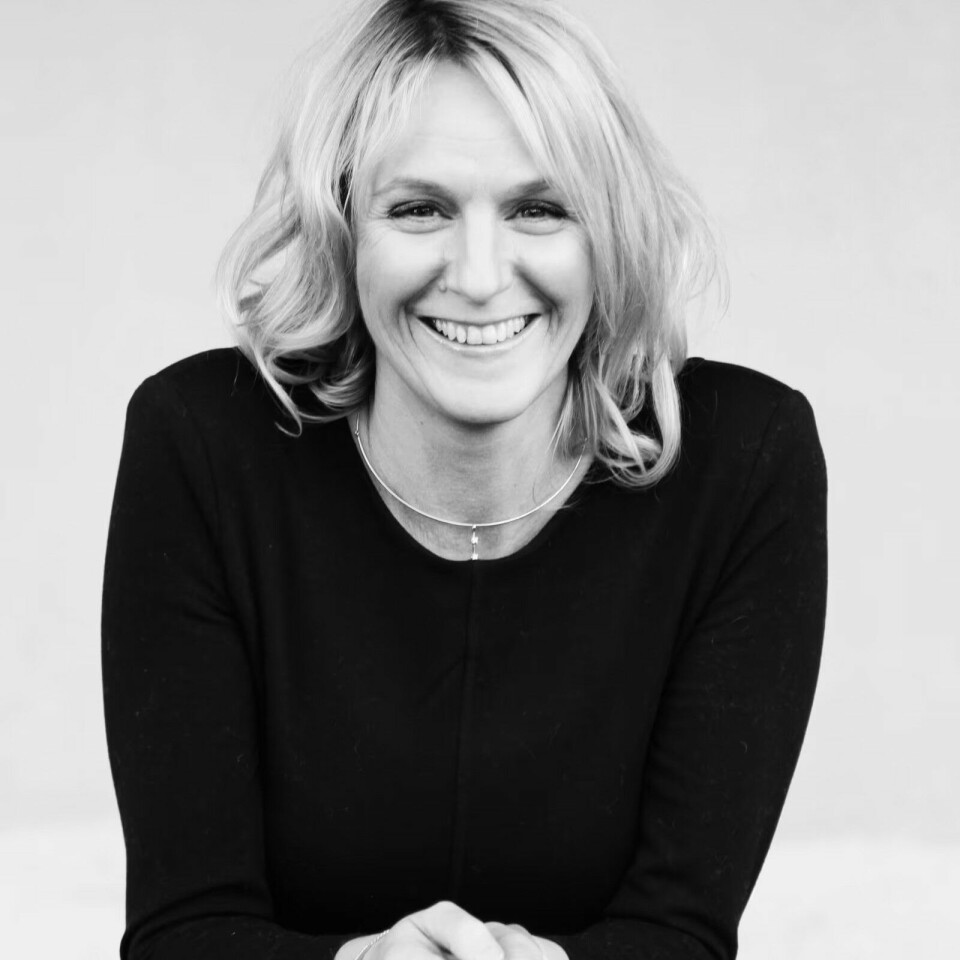
The most eager gardeners start with seeds indoors, but many also buy ready-to-plant vegetables.
“Tomatoes and cucumbers are very popular, but we tell customers that anything can be grown on a balcony. What matters is the size of the pot so that the roots have room to grow,” she says.
She once had a redcurrant bush on her balcony while living in central Oslo.
“There are also smaller fruit trees that can grow flat against a wall on a trellis,” says Næss.
Growing without a balcony and garden
If you don’t have a balcony, there is still hope. At NIBIO, they’ve held competitions in office gardening.
“We grew tomatoes and cucumbers in the window. The goal was to grow the biggest and most,” says Trond Knapp Haraldsen.
He won the cucumber category with both the largest cucumber and the most on one plant.
“I made sure to water them all through the summer holidays. Cucumbers are eager growers, but you have to remember to tie them up,” he says.
Still, he has stopped growing cucumbers at home.
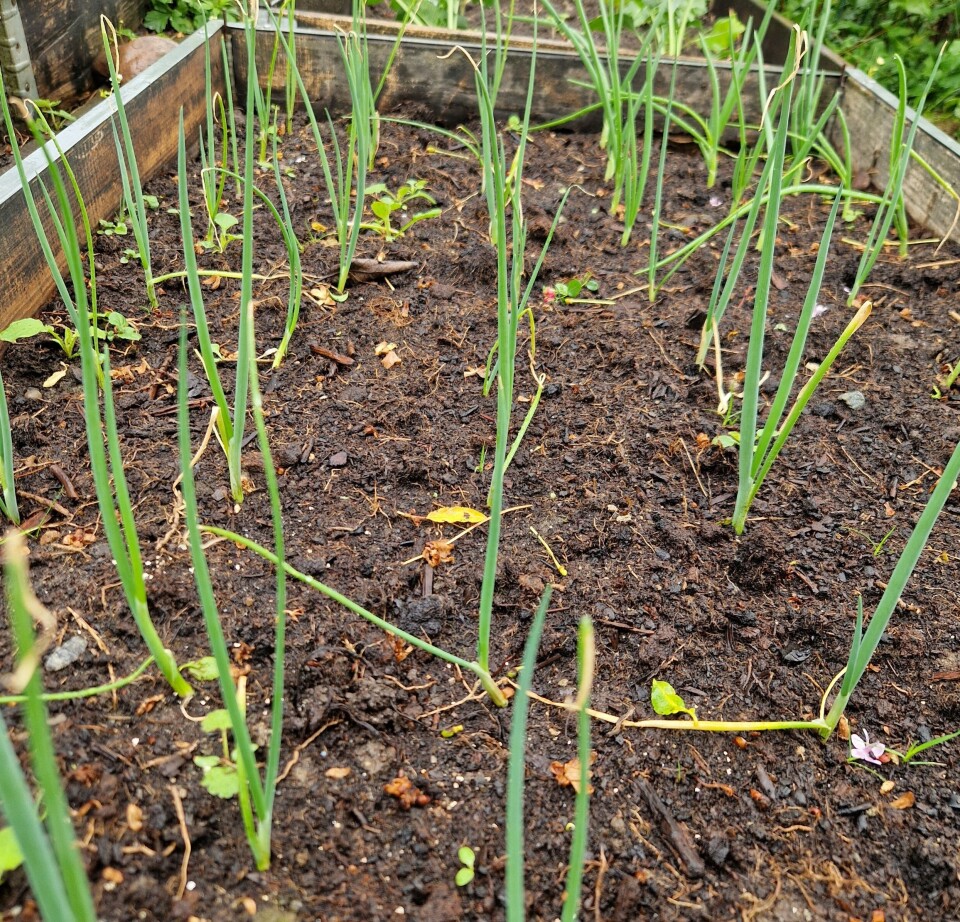
“Cucumbers weren’t popular in the family. So I had to adapt the cultivation to what they actually wanted,” he says.
He settled on potatoes, carrots, bell peppers, Jerusalem artichokes, and tomatoes.
“Jerusalem artichoke is the easiest I know of. It’s perfect for beginners,” says Haraldsen.
Leaves the insects alone
One vegetable Haraldsen does not recommend for beginners is cabbage.
“There are at least four different butterflies that can damage cabbage plants,” he says.
A garden fabric cover can help protect broccoli, cauliflower, head cabbage, and other brassicas. But they still require plenty of space, meaning large pots on the balcony.
Haraldsen is not too worried about insects. On the contrary, he has great sympathy for them and has been collecting insects since before he started school. So he is happy to share some of his harvest with them.
“I don’t live off what I grow, so if the insects enjoy being here, I think that’s completely fine,” he says.
———
Translated by Alette Bjordal Gjellesvik
Read the Norwegian version of this article on forskning.no

